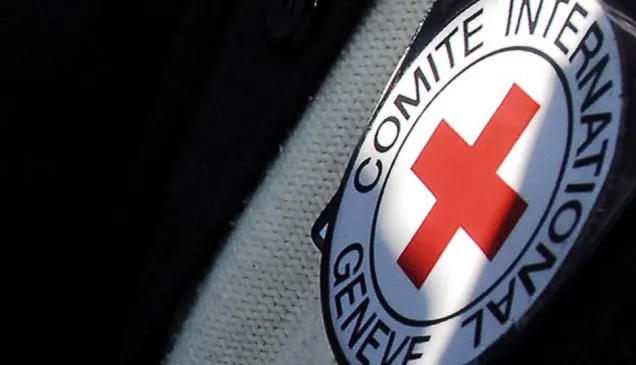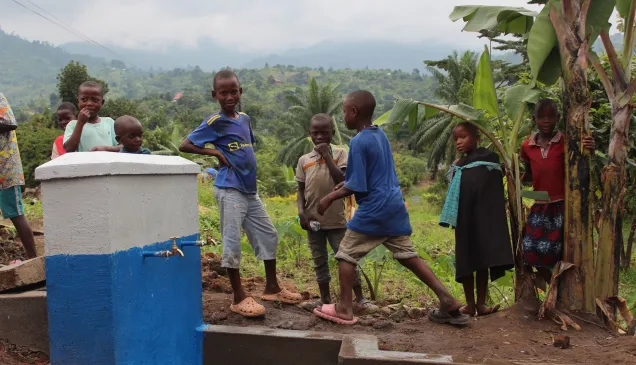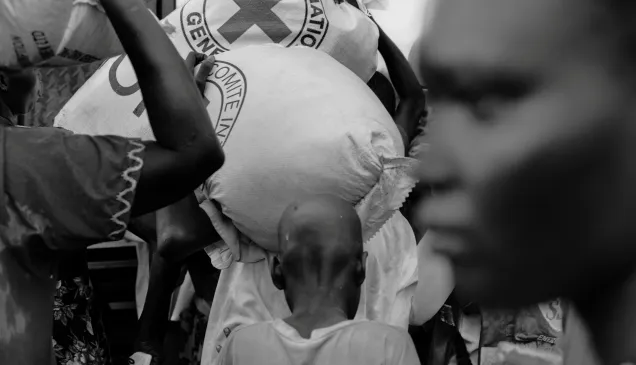Plenary statement by the ICRC at Habitat III, given by Hugo Slim, head of Policy at the International Committee of the Red Cross, 17-20 October 2016, Quito, Ecuador
Your Excellencies, Ladies and Gentlemen,
The ICRC welcomes the New Urban Agenda.
Quite rightly, the Declaration, Vision, Commitments and Implementation Plan of the New Urban Agenda focus on the cities we want. Inevitably, however, the New Urban Agenda (NUA) must start with the cities we have.
While we are in Quito, many thousands of people in the Syrian city of Aleppo are struggling to survive in the middle of armed conflict – their homes destroyed, their loved ones dead, their water, health and electricity services struggling to cope, and much of their city in ruins.
In Mosul in Iraq, thousands more are bracing themselves for a long battle that will bring death and destruction to their neighbourhoods. Like people in Fallujah before them, hundreds and thousands of them may flee from their city with nothing, and join the ranks of the world's 65 million forcibly displaced people, 75% of whom lives in urban areas.
The immediate challenge of the New Urban Agenda is to make today's cities resilient to armed conflict, disasters and violence. A truly resilient city is one that continues to work in bad times as well as good. Bad times are the acid test of resilience in cities. Keeping cities working for their people in the terrible conditions of conflict, disaster and violence is the challenge spelt out in the important humanitarian commitments of the New Urban Agenda.
But no city should have to endure violations of international humanitarian law (IHL) as stated in paragraph 30 of the NUA. The ICRC calls on all parties to conflict to respect IHL in today's increasing urban warfare. We also urge them to avoid using explosive weapons with wide area impact in densely populated areas. And we call on all warring parties to protect health facilities, their staff and patients.
The humanitarian commitments in the New Urban Agenda are significant, and the International Red Cross and Red Crescent Movement has worked hard to secure them with the help of many States present here today, UN Habitat and the various stakeholders of the General Assembly of Partners. We are glad to see humanitarian commitments run through the various paragraphs of the NUA.
It is not only in the tragic conflicts of the Middle East that cities are being destroyed and people are being forced to flee their homes to congregate as urban IDPs, or move as migrants to a different country.
Millions of people in cities, towns and informal settlements across the world find themselves in similar conditions. Armed conflicts and urban violence force thousands of people to move from one part of their city to another in search of safety, often being hosted by the urban poor whose living conditions are already extremely vulnerable.
War changes cities and makes new cities. One small town in northern Nigeria recently saw its population increased twenty fold in three days as people fled to it for safety. The towns and cities of the Lake Chad Basin have now joined those in South Sudan, the Central African Republic and the Democratic Republic of Congo as cities hosting IDPs, most of them urban IDPs deprived of effective basic services. In Asia, Afghanistan and Myanmar, towns and cities face similar challenges.
The two main pressure points in cities affected by armed conflict, and in cities struggling with urban violence, are safety and services. Safety and services are the great twin challenge for Mayors and municipal authorities and their operational partners.
This is why the ICRC is pleased to see so much emphasis on safety and services in the New Urban Agenda. It is in these two areas that the humanitarian struggle to support urban populations affected by armed violence must be won.
Armed conflict and urban violence will continue in the twenty years of the New Urban Agenda. These commitments to safety and services will be essential policy guides as city authorities work closely with humanitarian organizations to ensure that their cities respect the proper legal limits to armed violence, protect those most at risk and repair the humanitarian consequences of armed conflict.
If the acid test for a resilient city is its performance in bad times, then the test for effective safety and services is human dignity. Even in the worst of times, a city should seek to affirm and preserve the dignity of every human being who lives there, or who arrives to seek refuge within it.
The ICRC has been pleased to be a part of Habitat III and we gladly endorse the Statement to follow that will be made by the President of the Ecuadorian Red Cross on behalf of the whole Red Cross and Red Crescent Movement.
The New Urban Agenda starts today and needs to engage in the reality of today's cities. As people in Aleppo would surely remind us: the smartest city is a safe city.



